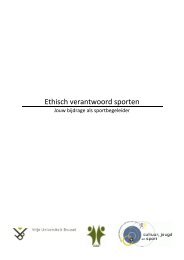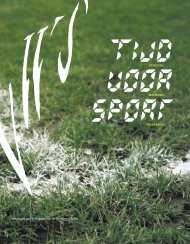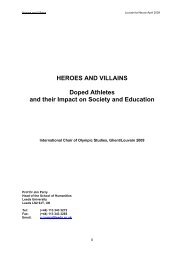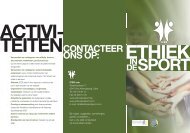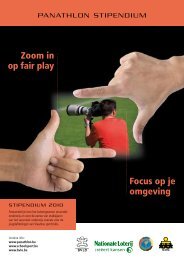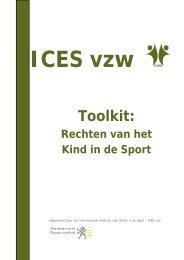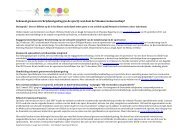Part 3 GLOBAL ISSUES: HARASSMENT AND ABUSE RESEARCH
Part 3 GLOBAL ISSUES: HARASSMENT AND ABUSE RESEARCH
Part 3 GLOBAL ISSUES: HARASSMENT AND ABUSE RESEARCH
Create successful ePaper yourself
Turn your PDF publications into a flip-book with our unique Google optimized e-Paper software.
It was in the middle of these early publications, reports and stories, that<br />
the 1994 Commonwealth Games Conference in Victoria, B.C., Canada,<br />
presented perhaps the first opportunity to take these issues to an international<br />
academic sport audience. In late 1993, with the then recently disclosed sexual<br />
harassment and sexual abuse in the Canadian and British contexts, 7 that<br />
Kirby and Greaves had applied for funding from Sport Canada to conduct<br />
research on sexual harassment and abuse in sport. Although the data from<br />
this research were not ready in time for the Conference in 1994, the<br />
researchers were able to identify the nature and scope of the problem of<br />
sexual harassment and abuse from the perspective of high performance<br />
athletes in sport. These findings were presented at the 1996 Pre-Olympic<br />
Games Scientific Congress in Dallas, Texas. That presentation broke new<br />
ground. The statistical data were presented and, as Celia Brackenridge wrote<br />
in the Preface to the subsequent book on the study, were “linked to the wider<br />
debates on the prevalence of sexual violence in modern life”. 8<br />
Research design<br />
With the financial assistance of Sport Canada and support of Athletes<br />
CAN, a Canadian-wide survey of national team and recently retired national<br />
team athletes was completed in 1996. 9 As indicated earlier, it was the first<br />
national, quantitative study addressing the nature and scope of the problem<br />
amongst high performance athletes. Although studies outside sport had<br />
indicated the kind of sexual violence experienced by women and children,<br />
none to that point specifically addressed such violence to females and males<br />
within the sport context. 10<br />
Using a survey-design based on and tested for validity in the 1993<br />
Canadian Women’s Safety Project, a bilingual sport survey was constructed<br />
for athletes. It had four parts. The first addressed whether or not athletes<br />
thought sexual harassment and abuse were issues of concern to them. The<br />
second tackled the issue of the ‘rumour mill’ - what athletes had seen and<br />
heard in sport. The third was composed of questions about what athletes had<br />
themselves experienced within the sport context, focussing on what<br />
experiences had upset them most. Finally, athletes were asked what, if<br />
3



